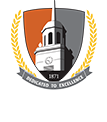What is a PLT?
Visit the MƒA Website for More PLT ResourcesCurrent PLTs
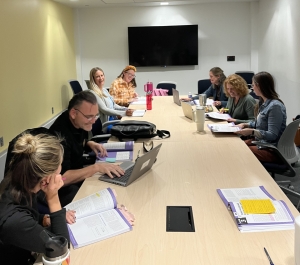
Building Number Sense through Daily Routines (K-5)
Co-facilitated by Julie Greco and Melanie Meller
How might we engage students to improve number sense and practice reasoning? Instructional routines can help K-12 math teachers think about how they can productively utilize the first few minutes of their math class to engage students in ways that support their development of number sense. One way to develop our students' number sense is to spend some time every day playing with numbers, talking about numbers and thinking about numbers. John SanGiovanni's book Daily Routines to Jump-Start Math Class focuses on the first five minutes of math class. The first five minutes of math class should feature an engaging activity that prompts students to think mathematically about the underlying concepts of the lesson. Giovanni's routines give teachers ideas on how they can engage students from the first few minutes of class in practical and doable ways and shares ideas on what they can anticipate their students might say and more importantly, how they might respond. This PLT will develop, implement, and reflect on the classroom implementation of number routines that build on San Giovanni's ideas. This PLT has a focus in grades K-5.
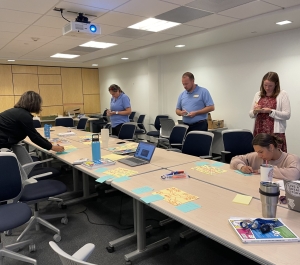
Building Number Sense through Daily Routines (6-12)
Co-facilitated by Melissa Bunce, Meghan Hillery and Justin Mullen
How might we engage students to improve number sense and practice reasoning? Instructional routines can help K-12 math teachers think about how they can productively utilize the first few minutes of their math class to engage students in ways that support their development of number sense. One way to develop our students' number sense is to spend some time every day playing with numbers, talking about numbers and thinking about numbers. John SanGiovanni's book Daily Routines to Jump-Start Math Class focuses on the first five minutes of math class. The first five minutes of math class should feature an engaging activity that prompts students to think mathematically about the underlying concepts of the lesson. Giovanni's routines give teachers ideas on how they can engage students from the first few minutes of class in practical and doable ways and shares ideas on what they can anticipate their students might say and more importantly, how they might respond. This PLT will develop, implement, and reflect on the classroom implementation of number routines that build on San Giovanni's ideas. This PLT has a focus in grades 6-12.
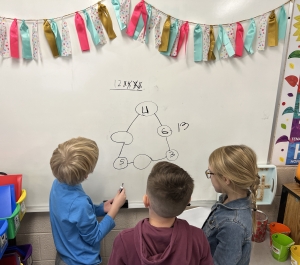
Building Thinking Classrooms in Practice
Co-facilitated by Adam Eschborn and Stacy Kerr
How might we shift our teaching to create more opportunities for students to display their thinking? Peter Liljedahl's book Building Thinking Classrooms in Mathematics: 14 Practices for Enhancing Math Learning will be at the center of this PLTs work. At each session, we will discuss how we can implement each practice and the "Try This" at the end of each chapter. Participants will share reflections on their classroom implementation efforts and discussions will provide opportunities for further refinement of practice to enhance the opportunity for students to engage. This PLT is open to any teacher in grades K-12 and although the book is targeted to math teachers, other content area teachers are welcome.
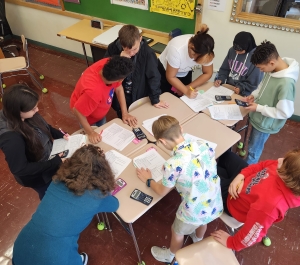
Desmos 6-A1 Curriculum Implementation
Co-facilitated by Stephen Johnson and Amy Golden
How might we utilize the Desmos 6-A1 math curriculum resources to best help engage our students and encourage a deep understanding of key grade-level mathematical concepts? This PLT will work collaboratively to support successful implementation of the Desmos curriculum by sharing best practices and troubleshooting areas in need of development. To this end, we will create a safe space for teachers to share experiences and reflect on practice. Strategies that support student-centered classrooms and how the tools in Desmos can be used highlight student voice and contribution will be central to the PLT's work. Additionally, we will monitor the alignment to the NYSED Next-Gen standards & share resources to meet the necessary learning standards. Target Audience: Teachers with full-year access to the Desmos curriculum & a willingness to implement lessons with fidelity and authentically share experiences with the PLT.
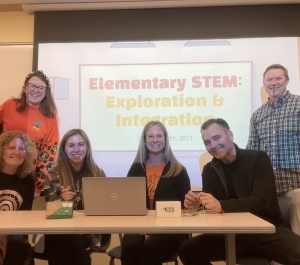
Elementary STEM: Exploration and Integration
Co-facilitated by Kimberly Hlavaty and Chuck Miller
How might we create a space where elementary teachers can come together to share and explore STEM concepts and how they can be integrated into curriculum to promote the 4 C’s of 21st century learning: Critical Thinking, Collaboration, Communication and Creativity? The central focus of this PLT will be around the question: How might we improve the level at which our students can critically think, communicate and collaborate with peers, and express their creativity? Many of us have classroom activities that cross the boundaries of many subject areas that we have found particularly effective in our elementary classrooms. With an emphasis on Science, Technology, Engineering, and Math, in this PLT we will spend time sharing and trying out these robust cross-curricular activities, taking new ideas back to our classrooms, and then reflecting on the effectiveness of the activities using student work as evidence. There are no requisite knowledge/skills needed to be a part of this PLT. We want this PLT to serve as a platform for elementary educators to share resources and activities in an effort to help prepare students for future careers in an ever-changing world.
Engineering in Math and Science Class
Co-facilitated by Joel May and Hannah Wawrowski
How might math, science and technology teachers work together to help students meet the engineering design components of the NYS Science Learning Standards? Many teachers avoid the engineering design standards due to lack of test presence and experience with this aspect of STEM. In our PLT we will identify topics in math and science classrooms that the members determine could be enhanced by including engineering design challenges or projects. We seek to include members from all STEM content areas as we develop new approaches to instruction, ideas for authentic project work, and opportunities for collaboration within your schools.
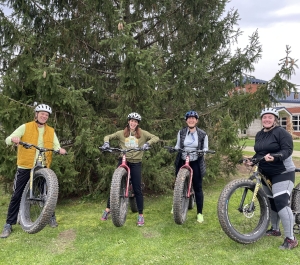
Outdoor Life Science
Co-facilitated by Mike Delmont and Kim Healy
How might we increase the connection between the classroom, the natural environment and our local community? This PLT is designed to provide outdoor science experiences for K-12 teachers in WNY. Teachers will use the experiences to collaborate and create authentic lessons for their own classrooms and grade level. This PLT places an emphasis on experiential learning which helps focus the alignment of learning on cross-cutting ideas and Next Generation Science Standards, while improving student engagement and connection with scientific phenomena. When possible, teachers will attempt to provide students with their own opportunities to experience outdoor science in their school or community.
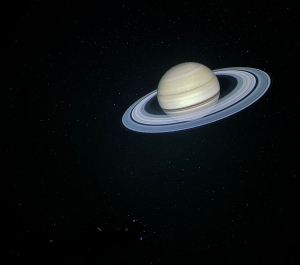
Physical & Earth Experiential Science
Co-facilitated by James Damon and Paula Eisenberger
How might we increase the connection between the classroom, the natural environment and our local community? This PLT is designed to provide field-based physical and earth science outings for K-12 teachers in WNY. Teachers will use the experiences to collaborate and create authentic lessons for their own classrooms and grade level. This PLT places an emphasis on experiential learning which helps focus the alignment of learning on cross-cutting ideas and Next Generation Science Standards, while improving student engagement and connection with scientific phenomena. When possible, teachers will attempt to provide students with their own opportunities to experience field-based science in their school or community.
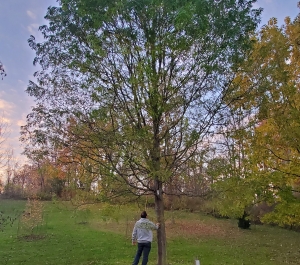
Science in Our Lives: Exploring & Preparing for Students' Futures
Facilitated by Arianne Dunlap
How might we get students to understand that science is all around them and part of their everyday lives? Almost any job they get in their lives will involve science to a certain point. Students don't realize how many jobs involve science; a hairdresser using chemicals to dye hair, a welder using metallurgy, a police officer using physics at a crime scene, a baker using chemistry to get the right density in their cake. This PLT will explore how science relates to everyday jobs and will allow us to show our students how even if they don't think they need science, it will be related to something they do in their everyday lives. To accomplish our goals, we will have guest speakers and go on field trips to hear first-hand how people in everyday careers rely on science. We will use the information we gather to develop classroom activities and public service announcements to increase student awareness of the role science plays in everyday careers. We also want to explore the prerequisite preparation paths needed for these careers (college/technical school) so that we can adjust our instruction to better prepare students for their career paths. The PLT would have a wide audience, elementary-high school as this information should be shared with all grades to get children interested /excited about science and where it can lead them. We can give them an appreciation for how science is all around them and an integral part of many jobs and also our daily lives. This would also be suitable for guidance counselors, as they can better inform the students on creating their schedules and better prepare them for their future.
STEM Educational Videos
Co-facilitated by Lukas Gill and James Roland
How might we create and support teachers in utilizing a video library that stimulates learning across various STEM content areas and grade levels? This PLT will allow for collaboration amongst K-12 teachers integrating educational videos into their STEM education curriculum. Participants will create videos that are recorded around WNY, for purposes of using these videos as learning experiences at the center of STEM content area lessons. The lessons generated will be a resource for WNY Master Teachers because they will be relatable and provide local context to STEM concepts for a diverse population of students and teachers. Additionally, our PLT will be able to respond to STEM video requests for additional lessons from other Master Teachers or PLT groups. All interested teachers are welcome.
STEM Girls
Co-facilitated by Jennifer Aumer and Susan Saeli
How might we use community resources to build connections that bring STEM experiences to female students? In this PLT, we plan to meet with females in STEM careers to inspire girls to pursue careers in STEM. We would like to explore opportunities to interact with local organizations employing female STEM professionals and how they might help support our students/classrooms/clubs. With the knowledge we gain from these experiences, we would like to develop STEM activities and field trips to engage our female students. We would also like to explore the possibility of a mechanism for our students who participated in these STEM experiences to share what they learned so that we can encourage other female students to get excited about STEM careers. Our hope is that through our work, more female students will take and remain in their STEM courses as they consider a career in STEM.
STEM Hikes
Facilitated by Lauren Vargovich
In the STEM Hikes PLT we will strive to provide K-12 educators with local locations for hikes that incorporate learning opportunities in STEM areas for their students. These hikes could be recreated as a field trip opportunity for students and customized by content area and grade level. After the hike we will collaborate to discuss ways to incorporate this new knowledge into valuable experiences and lessons for students K-12. Each hike would be planned based on most (if not all) of the following criteria:
1. Unique characteristics of the hiking area (local phenomena)
2. NYS Parks Grant locations in district areas that MTs teach (more easily provide field experience for students if funding is an issue in your district)
3. Striving to make NYS Standard connections in the area of STEM, as well as other content areas
4. Providing each hike with a guide in order to offer valuable expertise tailored to each experience
5. Safety and Accessibility
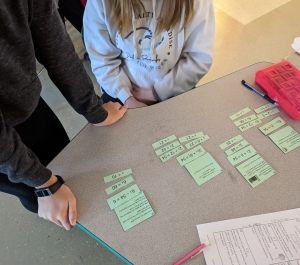
TRU Math
Facilitated by Erin McClure
How might we push our instructional activities to support agency, ownership, and identity while using formative assessment to track student growth, understanding, and engagement with the content? Continuing exposure to and work with the TRU framework, this PLT will invite participants to bring a lesson to the group for discussion with the goal of becoming more familiar with the Teaching for Robust Understanding Framework and how to push our daily lessons to be more TRU aligned. Participant teachers will be encouraged to record lessons to be discussed and/or provide an authentic student experience to the other participants in order for the group to see where the lesson falls within the framework. The participants will then develop teacher moves or adjustments to the presentation in order to better meet the needs a TRU aligned class. Although some content discussed may be outside of an individual's content level, the hope is that any level math teacher would benefit from the discussions based in the TRU framework.
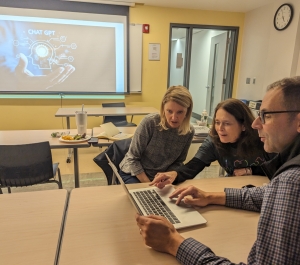
Utilizing AI (Chat GPT) in the Classroom
Co-facilitated by Jennifer Gazdovich, Yianna Russo and Rae Zimmerman
How might we engage in collaborative exploration of a variety of Artificial Intelligence resources in order to integrate AI in a positive way in our schools? This PLT will have a learning cycle of 2-3 meetings: In the first meeting we will explore a few specific AI resources and plan how we might implement changes in our classroom utilizing AI tools. This plan will include the implementation of key learning targets. The discussion may inevitably include conversation on district policies for teacher and student use as well as ways AI can be utilized if no policy is in place. In the second meeting, we will share the results of our implementation and modify/extend the activities as necessary. Finally, we will disseminate our teaching ideas.
TRU Science Lessons
Co-facilitated by Samantha Stone and Makenzie Schrader
How might we increase student agency, provide opportunities for development of student's scientific identity, and utilize formative assessment during rich science lessons? In this PLT we will explore how the TRU framework dimensions of Agency, Ownership and Identity, & Formative Assessment can be used as a tool to increase student engagement in our classrooms, and create more meaningful learning opportunities. Participants will share lesson materials and jointly create activities to support students' ownership of content. Classroom artifacts including student work samples and video, will be used for reflection on and refinement of practice through the lens of the two TRU dimensions. Science teachers from across grades k-12 are welcome.
Past PLTs
- Algebra Strings
- Amplify
- Analyzing Instruction in Mathematics
- AP Chemistry
- Big Science Uploads
- Building Math Minds Through Productive Math Struggle
- Calculus Sharing
- Climate Science in the Classroom K-12
- Coaching
- Common Language
- Computer Science
- Developing Engaged Thinkers in the Math Classroom
- Developing 3 Dimensional Lessons with an In-Depth Study of the CCC
- Drones in STEM Education
- Engineering Design Challenge
- Flipped Classroom
- Gamification in Technology
- GIS in the Classroom
- Growth Mindset in the Math Classroom
- Hybrid Math Instruction
- Hybrid Science Instruction
- International Teacher Professional Development
- Literacy
- Make
- Manifest
- Mathematical Investigations
- Mathematics Sharing
- Mentoring
- Physics and Math
- Post Pandemic Teaching
- Problem Posing and Problem Solving
- Science Learning From Wherever
- Social Emotional Learning
- STEM Leadership
- Teacher Networking Team
- Teaching Earth Science/Living Environment Remotely
- Virtual Instruction for Living Environment
